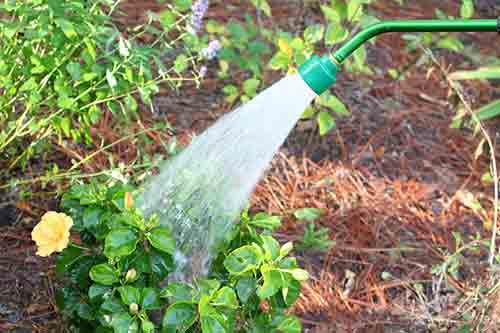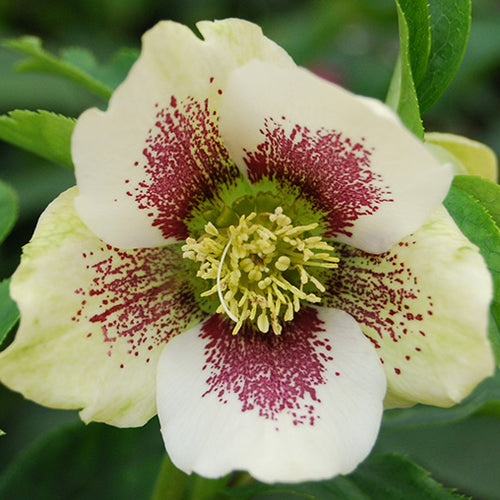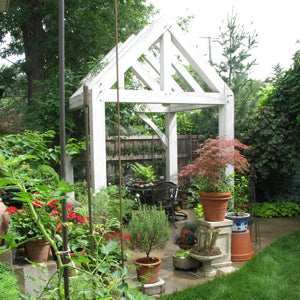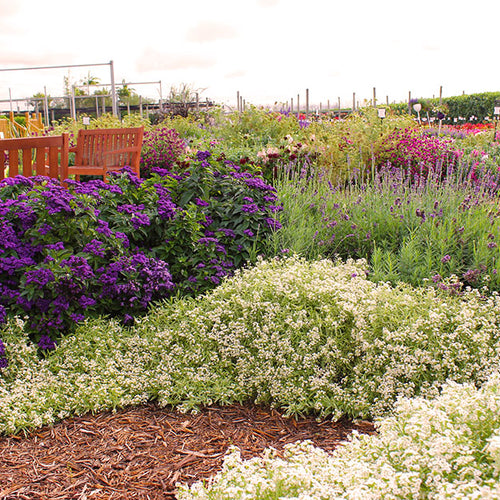Are you looking for a way to add drama to your garden?
Add a trellis, arbor, or screen and then cover it with a gorgeous flowering vine. One of my favorites is clematis. These fast-growing vines develop huge star-like flowers in red, blue, white, purple, lavender, rose, or bi-color. They grow 8 to 12 feet tall and but won’t take over your garden like more aggressive vines often do. These guys are easy to keep under control (there are also dwarf types that do great in containers).
I first discovered clematis when I was a child, and my Grandmother planted a trio of Jackmannii clematis, above, along our back picket fence. These vines would paint the fence with gigantic dark purple flowers every spring and early summer. She told me that her Mother and her Grandmother both grew this variety and that I should always include it in my garden because it was a family tradition (Jackmannii was introduced in 1862, so its performance has definitely been tested by time).
Add a trellis, arbor, or screen and then cover it with a gorgeous flowering vine. One of my favorites is clematis. These fast-growing vines develop huge star-like flowers in red, blue, white, purple, lavender, rose, or bi-color. They grow 8 to 12 feet tall and but won’t take over your garden like more aggressive vines often do. These guys are easy to keep under control (there are also dwarf types that do great in containers).
I first discovered clematis when I was a child, and my Grandmother planted a trio of Jackmannii clematis, above, along our back picket fence. These vines would paint the fence with gigantic dark purple flowers every spring and early summer. She told me that her Mother and her Grandmother both grew this variety and that I should always include it in my garden because it was a family tradition (Jackmannii was introduced in 1862, so its performance has definitely been tested by time).

Over the years I widened my clematis palette with other cool varieties such as Henryii, above, Belle of Woking, Dutchess of Edinburg, Ville de Lyon, The President, and Nelly Moser. I also learned the secrets to growing these amazing plants. Check out these tips:
- It’s often said that “clematis like their heads in the sun and their feet in the shade.” This means that clematis require at least 6 to 8 hours of direct sunlight a day, but they grow best where their root are cool and moist. Add a thick mulch of shredded bark or compost, around the base of your plants to keep them happy.
- Some clematis bloom on new wood and others flower on old growth. So the safest way to prune your plants is to wait until they start growth in the spring and remove any dead wood from the previous year. This way you won’t accidentally remove developing flower buds from old or new wood.
- In the spring, sprinkle some slow-release granular fertilizer around the base of your plants.
- Clematis vines are easily broken so take care when planting or working with your plants.
- Clematis climb by wrapping their stems around a support. To help them get started use twine to gently tie up the vines.
Written by Doug Jimerson

















